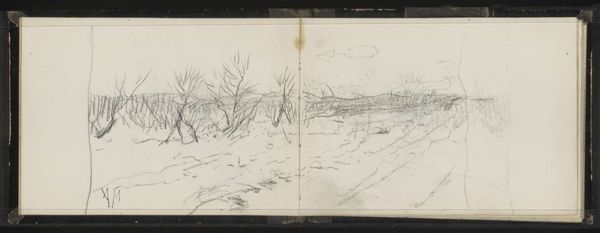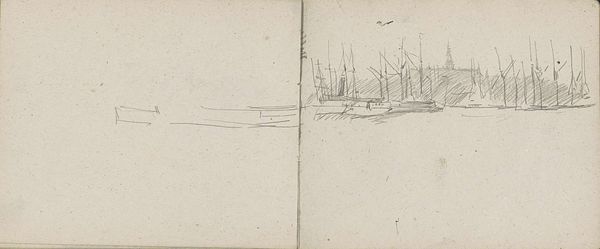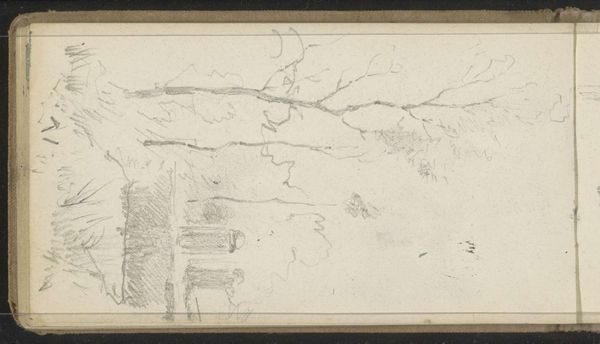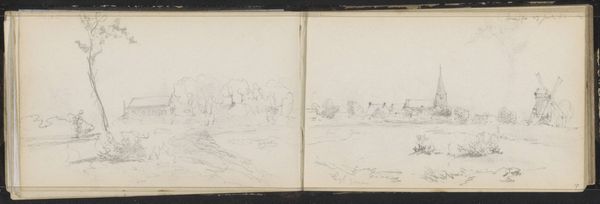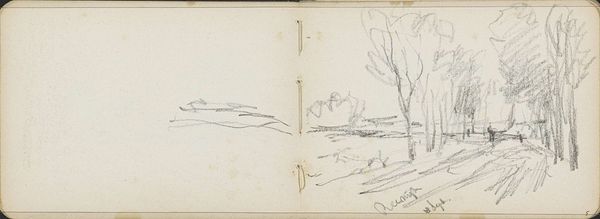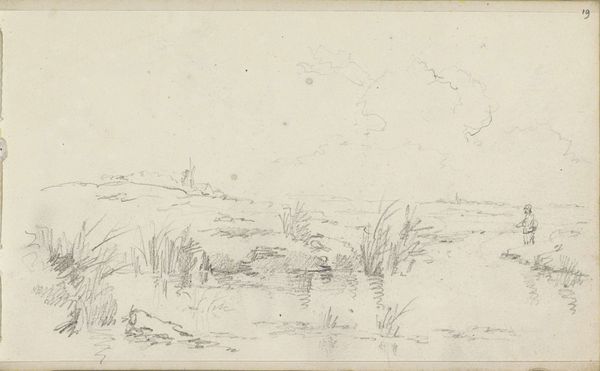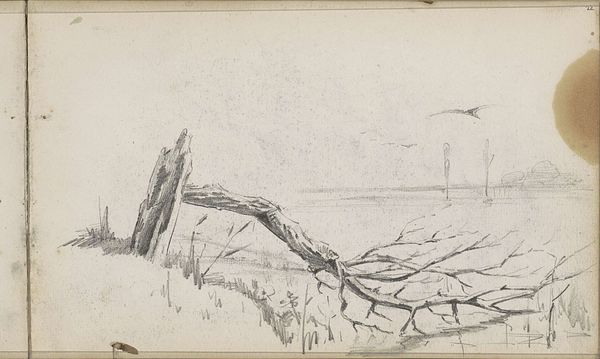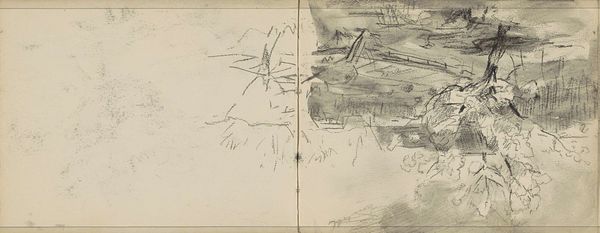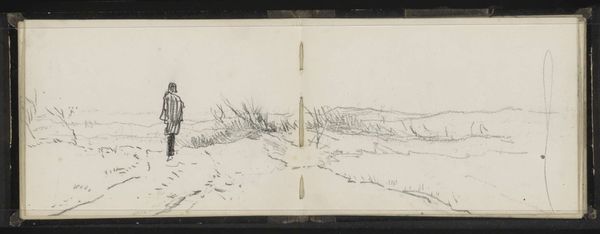
drawing, pencil
#
drawing
#
dutch-golden-age
#
landscape
#
pencil
#
realism
Dimensions: height 158 mm, width 247 mm
Copyright: Rijks Museum: Open Domain
Editor: This drawing, "Polderlandschap met figuren op een pad bij Delfshaven" by Willem Cornelis Rip, likely made around 1876-1877, feels so bleak yet peaceful at the same time. It's primarily pencil on paper. What do you see in this piece, beyond the obvious landscape? Curator: I see a powerful statement about humanity's relationship with the land, particularly in a Dutch context. This "polderland," reclaimed land, speaks to the constant negotiation between people and their environment. Do you notice the figures along the path? Editor: Yes, they look almost like silhouettes, anonymous. Curator: Precisely. Consider them as representations of the working class, historically tied to the land. Their presence underscores the social and economic realities of the time. What does the lack of detail in their faces suggest to you? Editor: Maybe… a sense of anonymity, or the universality of their experience? Perhaps, it's highlighting their class rather than their individual identity. Curator: Exactly! It’s as though Rip is commenting on the social landscape, where individual identities were often subsumed by the demands of labor and the physical environment. The starkness and limited palette amplify the social implications of their place in that landscape. And consider where it’s set. Delfshaven wasn't just any port. Editor: No, I think I read that it was where the Pilgrims set sail from, right? Curator: That's right. Considering that voyage as well as the figures journey through their physical landscape, Rip may also be commenting on social or political migration. It underscores ideas of identity in flux and what choices shape it. Editor: Wow, I didn’t pick up on that. Seeing it that way, it feels more like a sociopolitical statement than just a landscape drawing. Curator: It’s about seeing beyond the surface, understanding the layers of meaning embedded in the everyday. This is about the human condition!
Comments
No comments
Be the first to comment and join the conversation on the ultimate creative platform.


